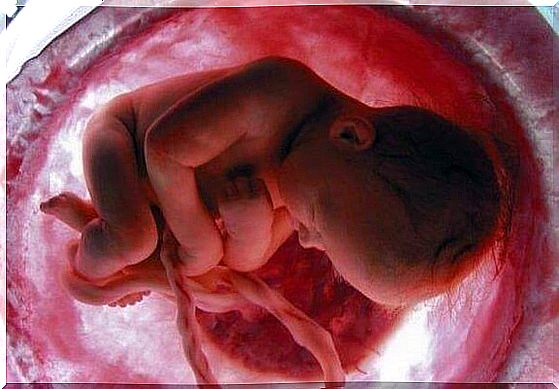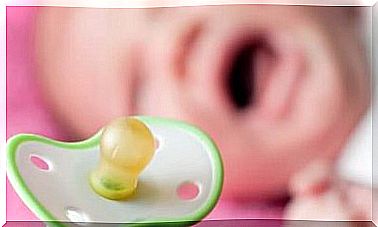Umbilical Cord Around The Fetus During Pregnancy And Childbirth

One of the biggest concerns of expectant parents regarding pregnancy and childbirth is the possible rotation of the umbilical cord around the fetus. The umbilical cord wrapped around the fetus is a fairly common problem, as statistics show that as many as one in five children develop a umbilical cord around a neck or other part of the body. In general, however, the entanglement of the umbilical cord does not cause particular harm.
What does the umbilical cord wrapped around the fetus mean?
The umbilical cord wrapped around the fetus is considered a serious complication during pregnancy, associated with fetal health problems and complications during childbirth. Before answering the question of whether it is dangerous for the umbilical cord to wrap around the fetus, it is important to know a little more about the umbilical cord. This tube, which takes care of the metabolism between the fetus and the mother, is usually about 50 centimeters long, but in some cases grows up to a meter. Due to its length, the umbilical cord can wrap around the baby’s arms, legs, body, or even the neck.
The severity of the situation, of course, depends on which part of the body the umbilical cord is wrapped around and how tightly it compresses the child. In addition to the length of the umbilical cord, the most common reasons for the umbilical cord to wrap around the baby are the baby’s movements, which can cause entanglement in the umbilical cord, as well as an excessive amount of amniotic fluid, leaving the umbilical cord more room to move.
Although the umbilical cord wrapping around the fetus may sound abnormal and strange, statistics show that one in five children is born with the umbilical cord wrapped around a neck or other part of the body. The mother cannot do anything concrete to prevent the umbilical cord from twisting, but controlling the situation and preventing injury is the job of doctors, midwives, and nurses.
Is twisting the umbilical cord dangerous?
In most cases, twisting of the umbilical cord does not cause problems for the fetus and does not prevent lower birth. Even the fact that the umbilical cord is wrapped around the baby’s neck does not usually force caesarean section. The only suitable moment to straighten the umbilical cord and remove it around the baby is during childbirth. Midwives and doctors have three ways to straighten the umbilical cord. In almost all cases, the midwife waits for the baby’s head to be visible and then slides the umbilical cord over the head. The second technique is used in only 9 percent of cases and involves the midwife or doctor waiting until the baby is completely out. The baby is held close to the mother’s arms and tilted so that the umbilical cord slides over her body.

If the umbilical cord is found to be around the neck of an unborn baby so that it makes it difficult for the baby to get oxygen, the doctor may cut the umbilical cord while the baby is still inside the mother. However, this method is used only in emergencies and only in about a hundredth of all cases.
There are many stories of the dangers that a umbilical cord wrapped around a neck or limb can pose. However, complications occur in only one percent of cases and are not usually life-threatening for the baby. However, it is true that in some cases the umbilical cord wraps around the child very tightly, endangering his or her health. In such a case, the nursing staff will assess whether an emergency section is needed or whether it can be expected and monitored whether the baby’s movements release the umbilical cord.
Umbilical cord protrusion
We would also like to mention the possibility of umbilical cord prolapse. This refers to a situation in which, due to rupture of the fetal membrane, the umbilical cord protrudes from the cervix into the vagina before or during childbirth. In such a situation, the umbilical cord is easily pinched, which can cause the baby to lack oxygen and, at worst, die.
Umbilical cord prolapse is often associated with posterior birth and multiple pregnancy. Abundant amniotic fluid, long umbilical cord, supply defects, and pelvic constriction also predispose to umbilical cord prolapse.
Complications during childbirth
Most children are born without problems, especially when the expectant mother has been involved in follow-up counseling and necessary examinations during pregnancy. However, the possibility of complications always exists, and wrapping the umbilical cord around the child is just one of the potential problems. Next, we list four other possible complications.

1. Childbirth does not progress naturally
In some cases, childbirth does not progress naturally due to, for example, a reduction in the mother’s strength, a weakened heart sound in the baby, a reduction in contractions, or a too little cervix. The mismatch between the size of the mother’s pelvis and the baby’s head can also be a problem. In certain situations, a suction cup can be used to help the baby be born as quickly as possible. An emergency during childbirth can also lead to an emergency section.
2. Changes in fetal heart sounds
There are several methods for monitoring fetal well-being during childbirth. Changes in the fetal heart rate may be a sign of a lack of oxygen, which may be caused, for example, by a contraction of the uterus that reduces placental circulation. In an emergency, a cesarean section is performed.
3. Shoulder dystocia
Shoulder dystocia is a rare situation in which a child clings to his or her shoulders in the mother’s pelvis. In such a case, the midwife or doctor must turn the child into a position that will accommodate the birth.
4. Premature detachment of the placenta
In about every hundred pregnancies, the placenta detaches prematurely. This causes the mother to bleed from the vagina and painful uterine contractions. Detachment impairs placental function and thus affects fetal oxygen uptake. Treatment is usually caesarean section and treatment of maternal bleeding shock. In mild situations where only a small part of the placenta has become detached and the fetus does not suffer from symptoms of hypoxia, the situation and the well-being of the mother and child can be monitored.









